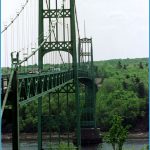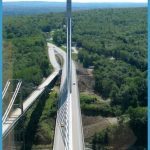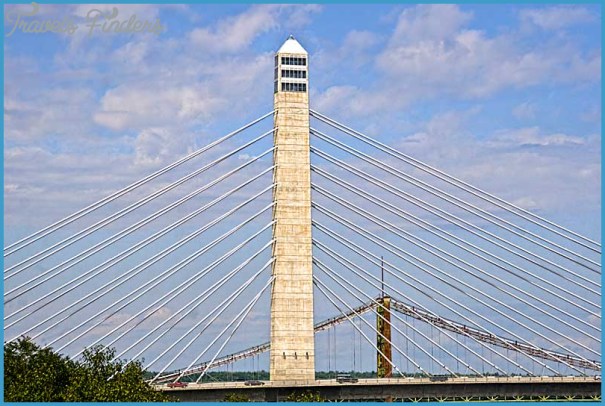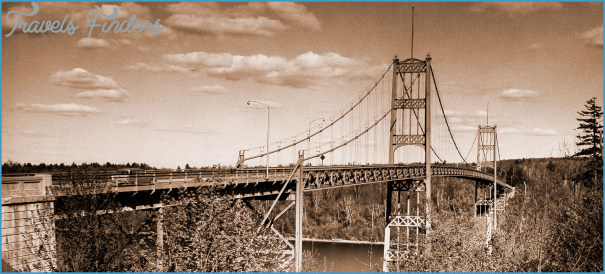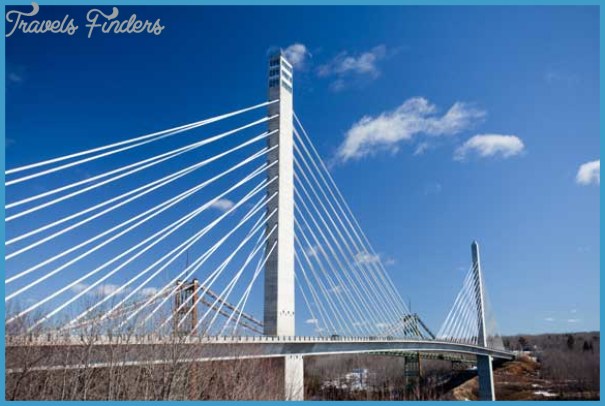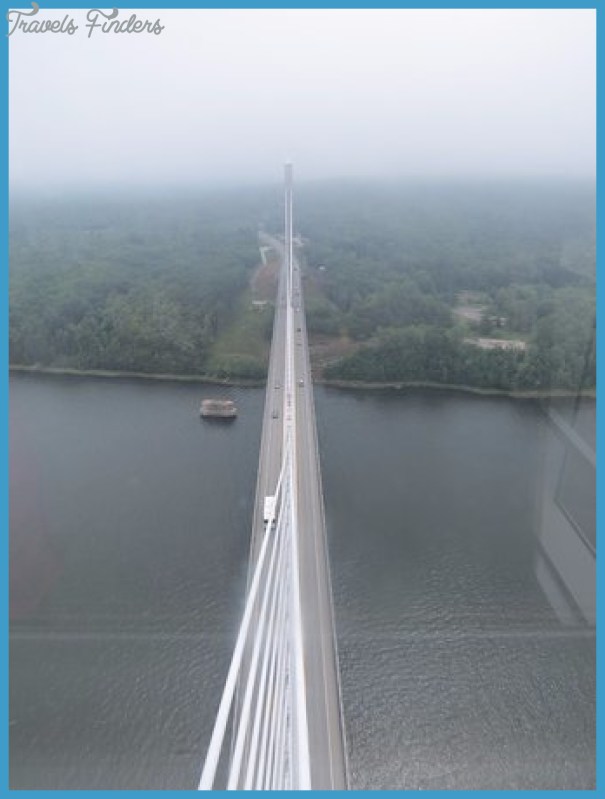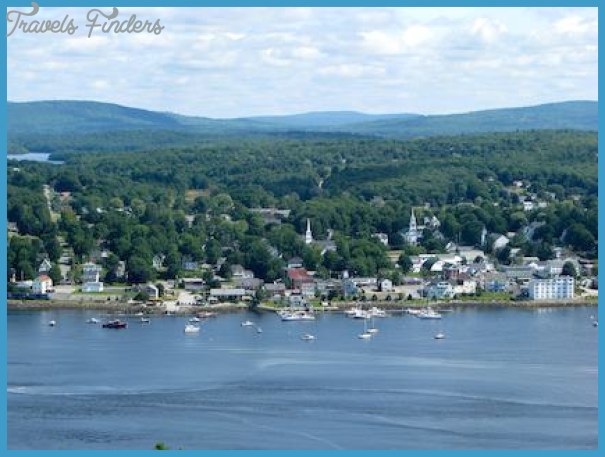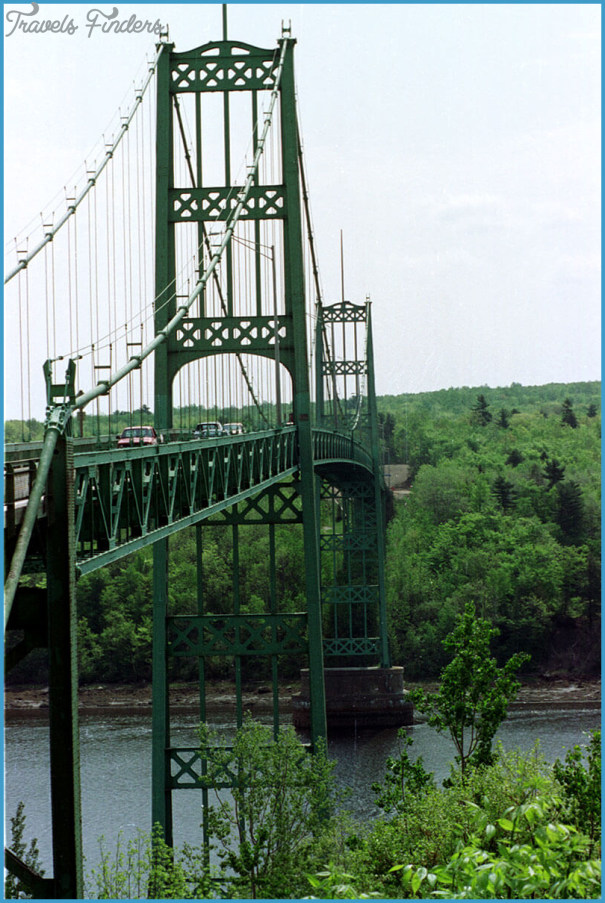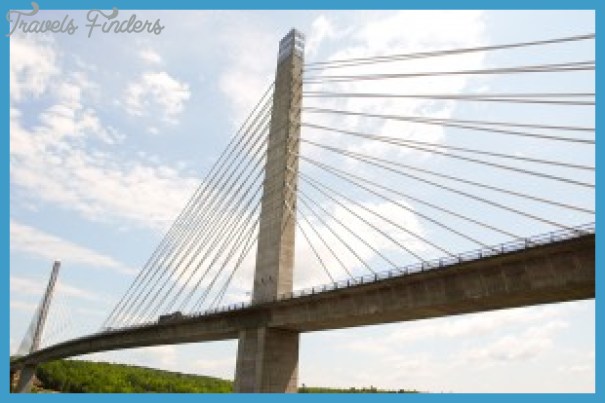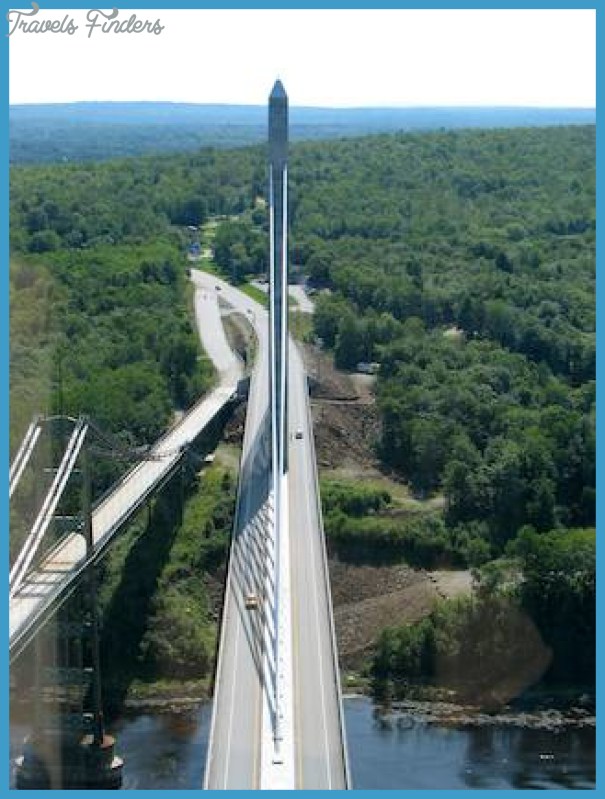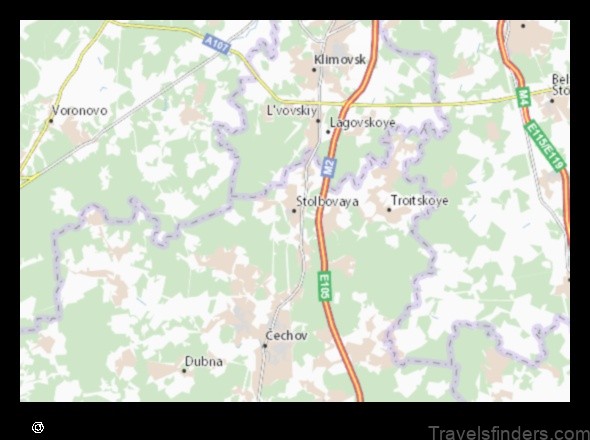PENOBSCOT NARROWS BRIDGE MAP AND OBSERVATORY TALLEST PUBLIC BRIDGE MAP OBSERVATORY IN THE WORLD
Crossing Penobscot River, Verona Island-Prospect, Maine Designer/Engineer FIGG Bridge Group Completed 2006 Span 1,161 feet (354 meters) Materials Concrete, steel Type Cable-stayed.
Once the community decided it was all about granite, new history was made.
The people of Verona Island-Prospect, Maine, treated the 1931 Waldo-Hancock Bridge, a suspension bridge that was deeply embedded in their landscape and in their hearts, as a member of the family. Consequently, after the Maine Department of Transportation (MaineDOT) determined that its corroded cables could not be repaired, the first hurdle was breaking the news to the community. The second was designing a replacement that residents would embrace, a challenge given their affection for the old bridge. These Mainers simply did not want a new bridge!
At the outset, FIGG Bridge Group, the designers, had few preconceptions about the new span but knew a cable-stayed bridge would take the least time and money. Made of precast concrete segments, it would last longer too.
Years ago, FIGG began inviting residents near the site of a new bridge to have a say in its design, the best way to ensure that the bridge would be welcome and fully integrated into the community. FIGG CEO Linda Figg recalled asking residents at a Verona Island-Prospect session, “Who are you? What would you like the rest of the world to know about your community when they come to visit?” Responses from the no-nonsense Mainers were many, but boiled down to this: We are all about granite. Granite from nearby Mount Waldo was used to construct many of the nation’s monuments including, memorably, the Washington Monument.
PENOBSCOT NARROWS BRIDGE MAP AND OBSERVATORY TALLEST PUBLIC BRIDGE MAP OBSERVATORY IN THE WORLD Photo Gallery
That got FIGG’s designers thinking. Since the pylons had to be extremely tall for a span long enough to cross the Penobscot Narrows, why not shape them as obelisks, using the same tapered form as the Washington Monument, and clad them in granite, a nod to the region’s granite. From there, it was a short leap to a much bigger ideaone pylon would incorporate an observatory like the one at the top of Washington’s monument. The concept captured the community’s imagination, and it blossomed.
The bridge, a balanced cantilever construction that uses a single box girder, is 2,120 feet (646 meters) long, with a main span of 1,161 feet (354 meters) and side spans of 480 feet (146 meters). Thanks to the owner-facilitated design/build agreement, MaineDOT retained control over both schedule and budget; the bridge was delivered in less than forty months. Cianbro/Reed & Reed, a joint venture, constructed it.
For all its utility, beauty, and historical continuity, what truly sets this bridge apart is its innovative structure. It is one of two bridges in the nation, both designed by FIGG, that incorporate a “cable-stayed cradle system.” Invented by engineer W. Denney Pate, FIGG’s lead designer, the cradle system streamlines construction, cuts costs by eliminating the need for pylon anchorages, and permits longer bridge spans.
Each strand is continuous from the bridge deck through the curved cradle in the pylon and back to the deck. Every strand has its own pipe, and acts independently. This means that individual strands can be removed, inspected, and replaced without closing traffic lanes. Moreover, because the strands are replaceable, new strand materials can be used as they are developed, making the bridge a real-time testing laboratory. In fact, shortly after its opening, several strands were removed and replaced with strands made of carbon fiber, the first use of such strands in an American bridge. The test monitors the viability of using this composite material, which is stronger than steel, on future spans. The patented, award-winning system also has been installed in the Veterans’ Glass City Skyway in Toledo, Ohio (see pages here-here).
Verona Island-Prospect now boasts the tallest public bridge observatory in the world, attracting thousands annually and enriching the economy just as it has enhanced the community’s pride and unique sense of place. Mainers everywhere agree that the new crossing is “wicked good.”
Each of the forty stays contains forty-one to seventy-three strands. The stays are encased in tubes that have been injected with inert gas to inhibit corrosion, a feature that also allows changes in pressurization to be detected and automatically corrected.
Verona Island-Prospect’s natural and historic treasures, including Fort Knox, a key military outpost during the Civil War, can be seen from the observatory.






